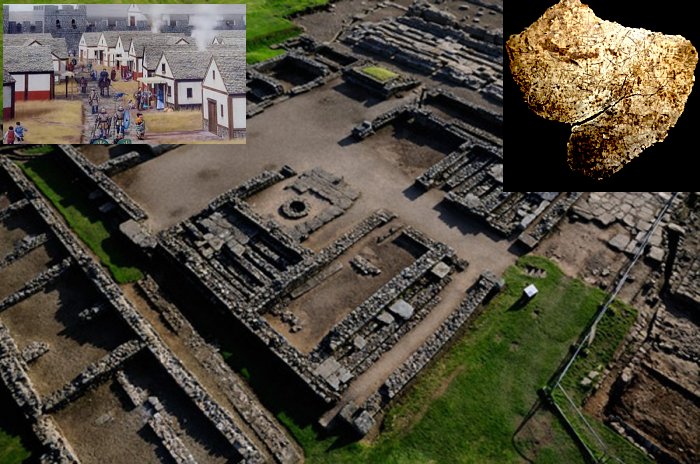Conny Waters - AncientPages.com - For years, the former Roman auxiliary fort, located just south of Hadrian’s Wall in northern England, has yielded a number of rare finds associated with the site and to the former Roman empire.
Among the well-preserved artifacts are ink tablets, shoes, combs, boxing gloves, boots, swords, and textiles.
Now, a rare Christian chalice covered with etched symbols has been unearthed in a rubble-filled building at Vindolanda Roman Fort, in Northumberland, Britain.
Archaeologists say that the rubble was once a 6th-century Christian church and the Christian cup, which was recently discovered is not a whole ancient vessel but only 14 fragmentary remains that one day can shed more light on a less understood period of our past in Britain, the 5th and 6th centuries.
For now, the artifact is in very poor condition due to its proximity to the surface of the ground, but lightly etched symbols, represent different forms of Christian iconography from the time.
The combination of so many of these etchings and the context of the discovery makes this artifact one of the most important of its type to come from early Christianity in Western Europe.
The experts say it is the only surviving partial chalice from this period in Britain and the first such artifact to come from a fort on Hadrian’s Wall.
The marks appear to have been added, both to the outside and the inside of this cup, by the same hand or artist and although they are now difficult to see with the naked eye, with the aid of specialist photography, the symbols have been carefully recorded and work has started on a new journey of discovery to unlock their meanings.
The etchings include some well-known symbols from the early church including ships, crosses and chi-rho, fish, a whale, a happy bishop, angels, members of a congregation, letters in Latin, Greek, and potentially Ogam.
The scientific analysis of the fragmentary chalice is ongoing with the post-Roman specialist Dr. David Petts from Durham University taking the lead on the research and commented:
"This is a really exciting find from a poorly understood period in the history of Britain. Its apparent connections with the early Christian church are incredibly important, and this curious vessel is unique in a British context. It is clear that further work on this discovery will tell us much about the development of early Christianity at the beginning of the medieval period."
Of all the artifacts that have been discovered at the ancient site of Vindolanda Fort in Britain, this one is particularly special, according to Vindolanda’s Director of Excavations and CEO, Andrew Birley led the team working on the site of the discovery.
Birley said that "to have an object like the chalice survive into the post-Roman landscape is just as significant. Its discovery helps us appreciate how the site of Vindolanda and its community survived beyond the fall of Rome and yet remained connected to a spiritual successor in the form of Christianity which in many ways was just as wide-reaching and transformative as what had come before it. I am delighted that we can now start to share our news about this discovery and shed some light on an often-overlooked period of our heritage and past".
The chalice now forms the central piece for a new exhibition in Vindolanda’s museum which highlights Christianity and the last periods of occupation on the site which opens on Monday 31st August 2020.
The fort of Vindolanda, one of the earliest Roman garrisons, built by the Roman army in England, is one of Europe's most important Roman archeological sites.
It guarded the Stanegate, the Roman road from the River Tyne to the Solway Firth, and was situated behind Hadrian’s Wall, near the modern village of Bardon Mill in Northumberland, England.
The Roman fort of Vindolanda is located just south of Hadrian’s Wall.
Written by Conny Waters - AncientPages.com Staff Writer
